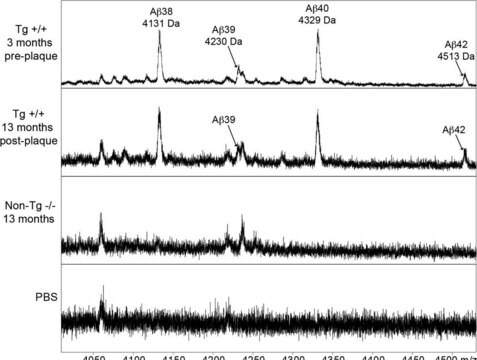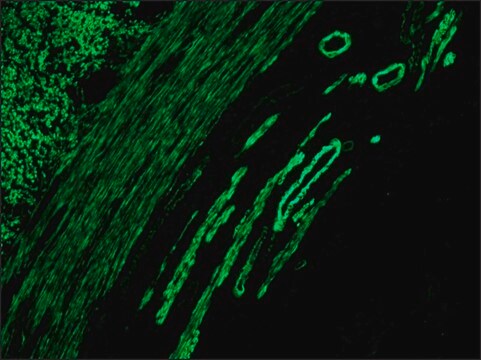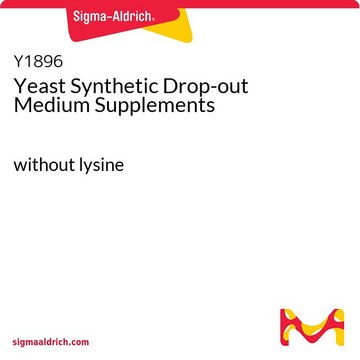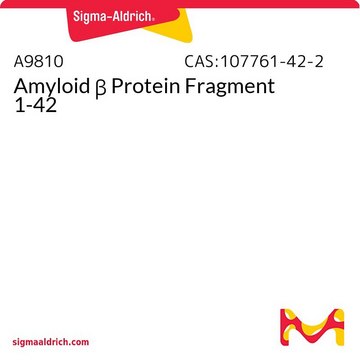Wichtige Dokumente
A8978
Anti-β-Amyloid (13-28) antibody, Mouse monoclonal
clone BAM90.1, purified from hybridoma cell culture
Synonym(e):
Anti-Aβ
About This Item
Empfohlene Produkte
Biologische Quelle
mouse
Qualitätsniveau
Konjugat
unconjugated
Antikörperform
purified immunoglobulin
Antikörper-Produkttyp
primary antibodies
Klon
BAM90.1, monoclonal
Form
buffered aqueous solution
Speziesreaktivität
human
Verpackung
antibody small pack of 25 μL
Konzentration
~2 mg/mL
Methode(n)
enzyme immunoassay: 0.2-0.4 μg/mL using amyloid β-protein
immunohistochemistry: suitable
immunoprecipitation (IP): suitable
western blot: suitable
Isotyp
IgG1
UniProt-Hinterlegungsnummer
Versandbedingung
dry ice
Lagertemp.
−20°C
Posttranslationale Modifikation Target
unmodified
Angaben zum Gen
human ... APP(351)
Allgemeine Beschreibung
Monoclonal Anti β-Amyloid [13-28] recognizes the β-Amyloid peptide. The antibody epitope resides within amino acids 20-23.
Anwendung
Immunohistochemistry (1 paper)
Physikalische Form
Haftungsausschluss
Sie haben nicht das passende Produkt gefunden?
Probieren Sie unser Produkt-Auswahlhilfe. aus.
Ähnliches Produkt
Lagerklassenschlüssel
10 - Combustible liquids
WGK
WGK 3
Flammpunkt (°F)
Not applicable
Flammpunkt (°C)
Not applicable
Persönliche Schutzausrüstung
Eyeshields, Gloves
Hier finden Sie alle aktuellen Versionen:
Besitzen Sie dieses Produkt bereits?
In der Dokumentenbibliothek finden Sie die Dokumentation zu den Produkten, die Sie kürzlich erworben haben.
Kunden haben sich ebenfalls angesehen
Unser Team von Wissenschaftlern verfügt über Erfahrung in allen Forschungsbereichen einschließlich Life Science, Materialwissenschaften, chemischer Synthese, Chromatographie, Analytik und vielen mehr..
Setzen Sie sich mit dem technischen Dienst in Verbindung.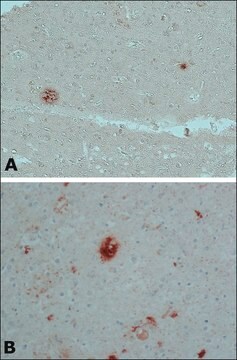


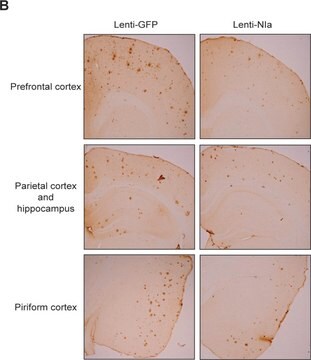
![Anti-β−Amyloid [22-35] in Kaninchen hergestellte Antikörper affinity isolated antibody, buffered aqueous solution](/deepweb/assets/sigmaaldrich/product/images/167/133/003c2b30-0f73-4e7e-b498-e4d35df4d55a/640/003c2b30-0f73-4e7e-b498-e4d35df4d55a.jpg)





